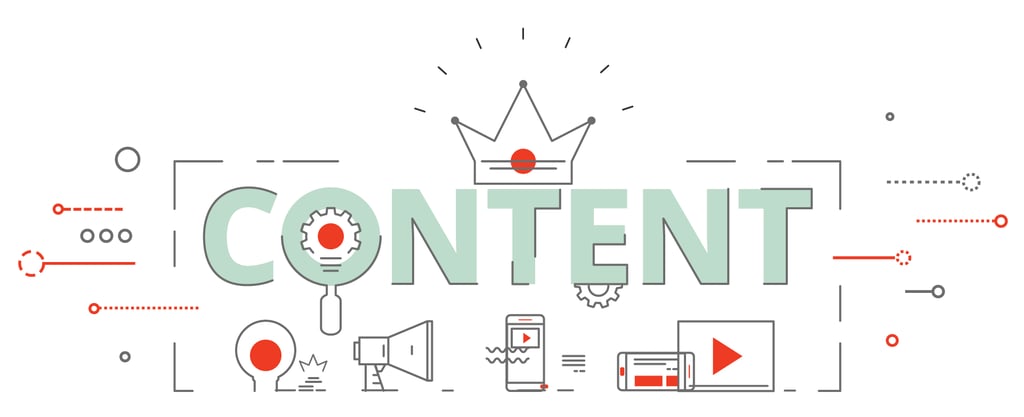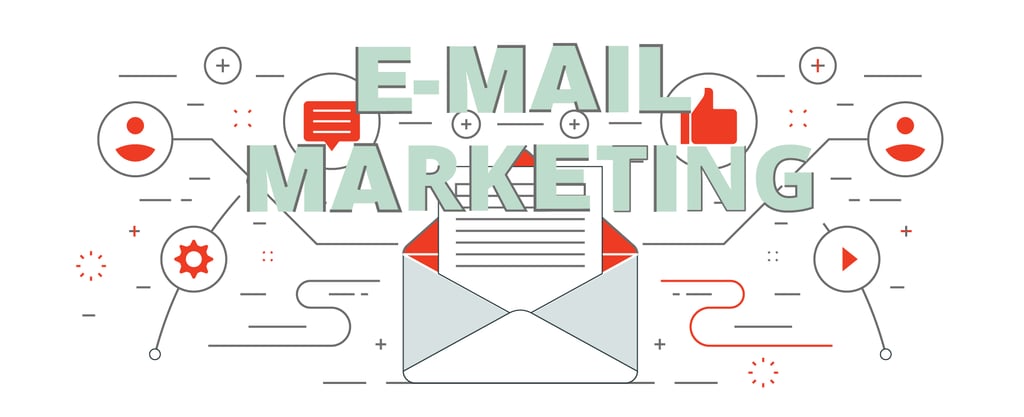Trade shows have long been the go-to marketing strategy for B2B marketers. 77% of surveyed marketers ranked trade shows as their primary marketing channel in a Content Marketing Institute survey. And it's no surprise. Trade shows offer businesses the chance to talk face-to-face with their prospects -- prospects who have likely paid to attend the show and who are walking right into your booth to learn more about your company.
For some B2B marketers trade shows become their only strategy. It can be so deceptively simple. Attend trade show. Get new clients. Repeat. But trade shows are expensive -- booth, design, travel, time away from the office -- it all adds up. This article is about how to expand beyond just doing trade shows and explains how some of these other marketing tactics can make your time at trade shows even more effective.
Content Marketing
HubSpot, a marketing automation platform, calls this Inbound Marketing (as opposed to outbound methods, like cold calling, cold emailing). The fundamental strategy behind content marketing is that you use high-quality content to drive traffic to your website with the goal of collecting small bits of information to help you nurture this lead through your sales process. In the early stages, much of this happens without intervention from you (aside from setting up the entire nurturing process at the beginning) and allows your sales team to come in right at the end, when that lead has become an SQL (sales qualified lead) and needs less education, less information, less selling.
Get Started
- Know Your Prospects: Going through the process of creating personas helps you better understand what your customer needs. You look at their problems through their eyes. This leads to content that is more benefit-driven versus feature-driven (which is generally less interesting to prospects at the early stages of the buying process).
- Know Your Goals: For most B2B marketers, the goal is More Leads. Pick a number, make it ambitious and use it as your goal post. Having a concrete goal lets you work backwards to define the KPIs that are going to get you to your goal, for example: website visits, content downloads, social post clicks.
- Create an Editorial Calendar: Develop content clusters around a single topic so that you can create content for each stage of the funnel (Awareness, Consideration, Decision). Include topic, author, due date, keywords, personas, funnel stage and calls-to-action. This puts structure around your content and ensures you stay on track with your strategy.
- Think Beyond Blogs: Blogs are great for generating Awareness phase traffic through SEO, eNewsletters and social posts. Just make sure you are including other ideas in your content strategy like infographics, white papers, videos and checklists. You can use these higher value pieces as gated content for lead gen.
- Track Your Results: You set KPIs (right?), so how is your content measuring up?
Trade Show Tie-in
Look at all of the trade shows you plan to attend for the year. Create your content topic clusters to align with the focus of each trade show. Use your content to build your reputation as an expert and as a place to drive your prospects to find information that's relevant and specific to their needs.
Bonus Tip: Instead of just having data sheets and company brochures, print some of your best downloadable content and use it as conversation starters with visitors to your booth. They will likely find this more useful than the beer koozie.
Bonus Bonus Tip: Don't overlook your current customers in your content strategy. Creating engaging, informative content is an effective way to build loyalty.

Social Media
Having a presence on social media is vital for your business. Your prospects will not only check out your website after seeing you at a trade show, they will also check out your social media profiles. LinkedIn and Twitter are generally safe bets for most B2B companies. Whichever platform(s) you focus on, it's important to have a consistent presence and to have a strategy.
Get Started
- Define Your Goals: Do you want to drive brand awareness, drive leads, provide customer support? Document this and use it as a guide for posts you share.
- Create a Social Posting Calendar: Start with a 1-month calendar and assign dates. This makes you accountable and keeps you posting consistently and with a cohesive message. Tie this in with your overall Content Marketing calendar and don't forget to include your current clients into the messaging plan.
- Don't Set it and Forget it: After you post, stay engaged. Reply to comments, thank people who share and basically, be sociable.
- Track Your Results: Look back on which posts performed well and learn from it so you can keep improving with each new post.
Trade Show Tie-in
Using social media in advance of a trade show can prime you for a more productive show. Let your network know you'll be there, share your booth number and give them a good reason to stop by. Reach out to people personally through direct messages and invite them to set up a meeting. You might find your team well booked with meetings before you even arrive at the show.
Bonus Tip: Don't be afraid to put a little ad spend behind your social media efforts. Nothing is ever really free and social media is no exception. If a post is doing well, boost it even more with some paid placement. But before you spend a dime, make sure your post has a clear call-to-action (schedule a meeting, download a data sheet, etc.) so you can measure results in a clear-cut way. Here are some tips on using Facebook for B2B marketing.
Email Marketing
You probably already have a relatively large customer email list. But are you making the most of it? Retaining and expanding current customer relationships is far less expensive than acquiring new customers. Just like you can use your content strategy and your social media strategy to reach your current clients, email marketing is also a fantastic way to reach this receptive audience. Make your emails informative, give your customers tips for using your products to better than business, inform them of product upgrades and releases, share industry news they might have missed. This all establishes you as a trusted business partner.
You can also use email marketing to nurture leads. When you have content that is created for each phase of the buying process you can use email to promote that content and move prospects down the funnel.
Get Started
- Define Your Goals: Notice a pattern yet? Knowing what you hope to achieve from any marketing effort helps you stay focused, making decisions based on a strategy instead of on a whim. For email marketing, your goals will vary based on the nature of the email but every email should have a call-to-action (be it, "Read the Newsletter" or "Download the White Paper") and be serving to either generate leads, generate sales or improve customer engagement.
- Create an Email Send Calendar: Plan out when you are sending emails and make sure you are not inundating your customers and prospects with messages. Stagger blog posts, social posts and email sends so that you are front of mind without being intrusive. Tie your email topics in with your main content calendar. This creates tight strategies that drive traffic from multiple channels.
- Test, test, test: Subject lines matter. Test to discover which ones result in the best open rates. Getting someone to open your email is 90% of the battle. So any gain in this area is worth the effort. Send times and send days might also have an impact so systematically test these variables (but one at a time!).
- Track Your Results: Open rates, click-through-rates, unsubscribe rates and conversion rates. These are the primary KPIs that you'll be looking at for email marketing.
Trade Show Tie-in
Most trade shows offer their email list of attendees for rental. Take advantage of it! Email their list ahead of the show and encourage them to visit your booth, set up a meeting or download a white paper from your website (then you'll own the email address and the lead).
Bonus Tip: Overly-designed, slick HTML emails are not always the most effective tactic. Try sending some plain text emails, appearing to come directly from a member of your sales team and see how they perform compared to traditional marketing emails.
Conclusion
This is by no means an exhaustive list of marketing tactics for B2B companies. Instead, I hope this sparks some new ideas for tactics that don't replace trade shows but that do expand the impact of trade shows.
You might also be interested in this post: The 3 Key Times to Maximize your Trade Show Attendance
Bonus Resource
If all of the marketing options available to you set your head spinning, you’re not alone. That’s why we created our "Untangle Your B2B Marketing Options" infographic to help sort it all out.





